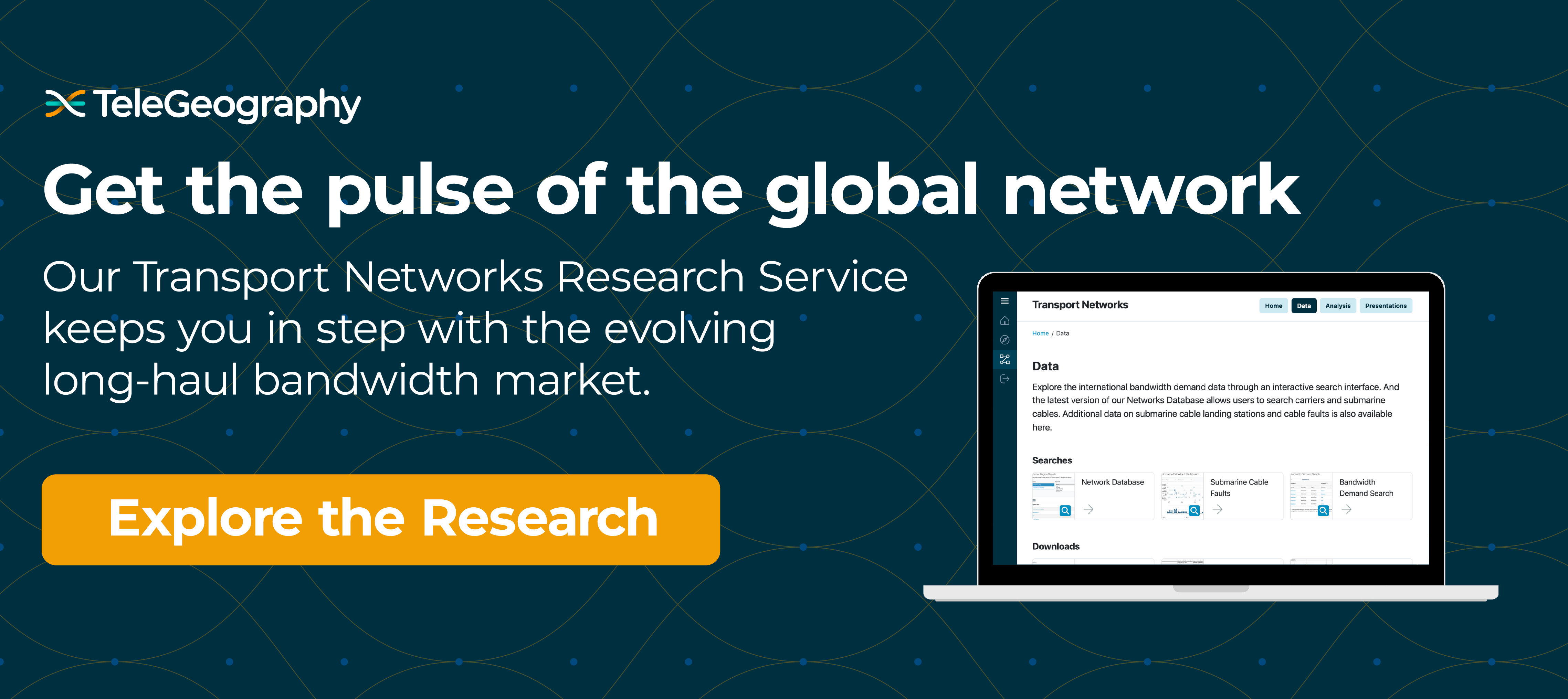Subsea cables power the internet under oceans all over the world. But how many cables are there?
As telecom experts, we know because we keep track. And TeleGeography's interactive submarine cable map recently hit a new milestone: depicting over 650 cable systems!
As of 2025, that’s a whopping 570 in-service systems, with another 81 planned. The number of in-service systems is greater now than in any other year within the last two decades.
How Do We Count Submarine Cables?
Thanks to massive infrastructure investments—both along major routes and to small islands—and our ongoing efforts to track global systems in more detail, the number of cable systems we study is constantly increasing.
We focus on publicly-known communications systems and exclude undersea lines exclusively dedicated to power transmission, research networks, and private government use. Once cables are retired, we remove them from our online map.
For more information on the cable-tracking process, you can hear my colleague Greg Bryan and I get into the details on the TeleGeography Explains the Internet podcast. Listen to the full episode here.
What Are Submarine Cable Systems?
The number of cable systems we track is different from the total point-to-point connections shown on the map.
Each cable system is uniquely designed to fit its capacity requirements and local geography. As such, it may contain multiple segments or branches, as do over half of the systems on our map.
The difference between cable systems and segments is most easily demonstrated in the Atlantic. Although there are only 13 in-service trans-Atlantic cable systems, 17 segments actually cross this route.
This is made possible by systems like Vodafone’s Apollo, which connects the U.S., France, and the U.K. through two parallel paths—one North, the other South, and each with their own pair of landing stations.
You can also check out this report on submarine cable landing stations.
Using Submarine Cable Data
Some of this interesting data is publicly available through our interactive submarine cable map (and power users can challenge themselves in our cable trivia).
But if you're looking for the data telecom experts use to keep their pulse on international markets, you need TeleGeography's Transport Networks Research Service.
With detailed profiles of more than 455 network service providers and 650 submarine cable systems, Transport Networks Research Service is the most comprehensive source in the global telecoms industry for:
- Bandwidth supply and demand analysis by region and route
- Key data and analysis on major content providers, including metrics on international bandwidth growth
- Comprehensive wholesale bandwidth pricing trends
Learn how you can get the competitive advantage with Transport Networks Research Service:
Lane Burdette
Lane Burdette is a Research Analyst at TeleGeography. She specializes in internet infrastructure with a focus on submarine cables, data centers, and public policy.






